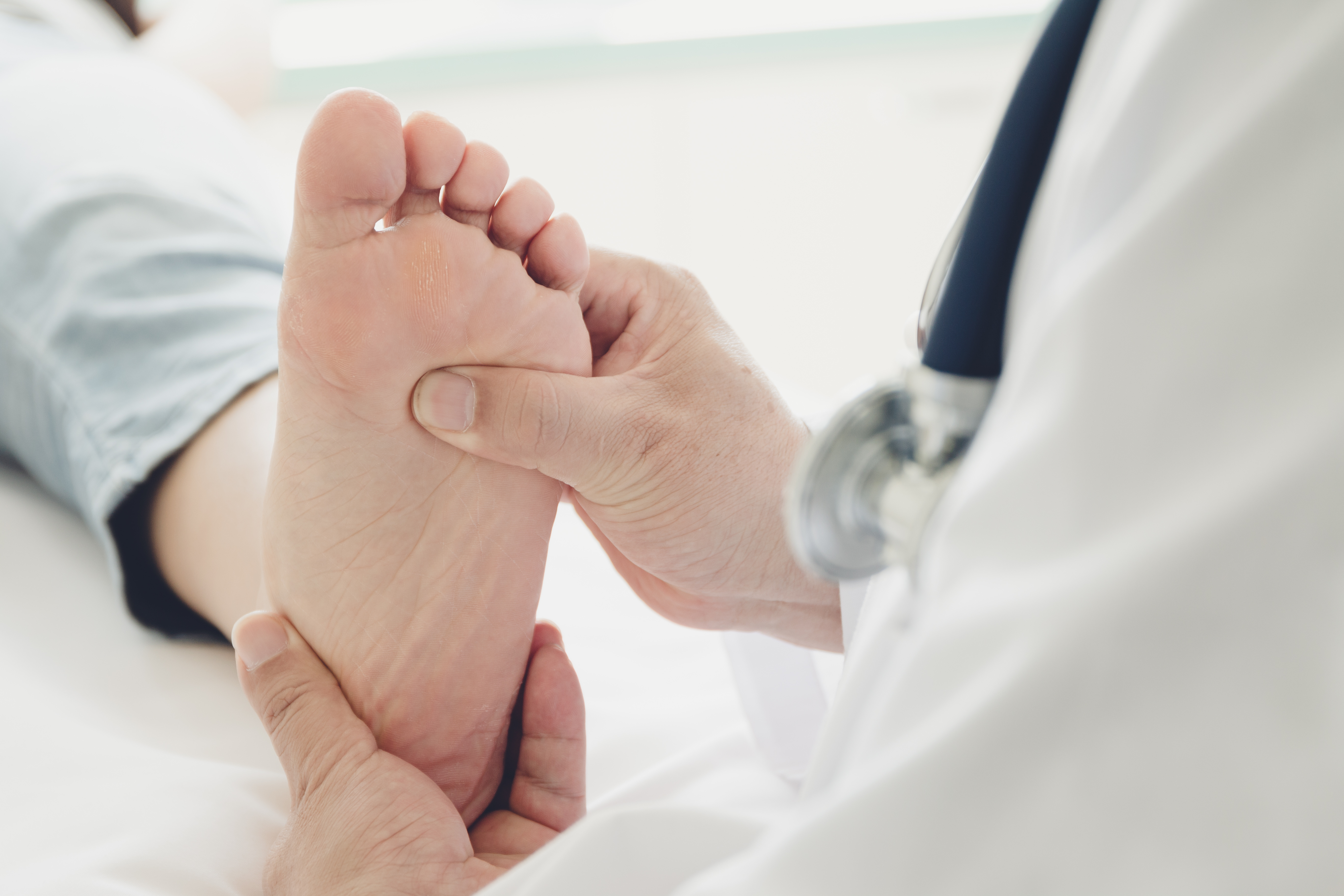
Published on October 14, 2025
Read Time: 2 Minutes
Three Things to Know
- Foot care is essential for people with diabetes. High blood sugar can damage nerves and blood vessels, increasing the risk of serious foot problems.
- Most complications are preventable. Daily foot checks, good hygiene, and properly fitting shoes can help protect your feet and overall health.
- Early attention makes a difference. Promptly treating any cuts, sores, or swelling can prevent infections and more serious complications.
People living with diabetes must pay close attention to their health every day. Foot care, however, is often overlooked. Over time, high blood sugar can damage nerves and blood vessels in the feet. The good news is that many diabetic foot problems can be prevented.
Candy Sadler, an adult geriatric nurse practitioner (AGNP) who specializes in wound care, answers some common questions about diabetic foot care.
What are the risks to diabetic foot health?
The biggest risk is diabetic neuropathy, or nerve damage caused by high blood sugar. Neuropathy can lead to pain, tingling or even numbness in your feet, so you may not notice a blister or injury. It can also affect sweat and oil glands, leading to dry, cracked skin that allows germs to enter. Diabetes can also cause blood flow problems and slow healing, so even small injuries can turn into serious wounds if not caught and treated early.
What daily steps can you take to prevent foot problems?
The best protection is making foot care part of your daily routine:
- Check your feet every day for cuts, redness, swelling, blisters or sores. Use a mirror or ask someone for help if needed.
- Never walk barefoot, even indoors. Small objects can cause injuries you might not feel.
- Wash and dry your feet carefully, especially between the toes.
- Apply moisturizer to dry areas, but avoid between the toes, where trapped moisture can lead to infection.
- Wear well-fitting shoes and clean socks to reduce pressure and friction.

When should you call a doctor?
Contact your physician or provider right away if you notice:
- A sore, blister or wound that doesn’t begin to heal within a 1 or 2 days.
- Redness, warmth or swelling
- Drainage on your socks or shoes
- Deep or painful cracks in your heels
Early treatment can prevent serious infections and even save your foot. Always have small problems checked before they get worse.
Do diabetic socks and shoes really help?
Yes. Diabetic socks have no thick seams and help keep feet dry. Diabetic shoes and inserts reduce pressure points and friction. They are especially useful if you have bunions, hammertoes or wide feet. Insurance often covers diabetic shoes with a prescription.
How serious are diabetic foot ulcers?
A foot ulcer is more than just a sore. Because of slower healing times, ulcers in people with diabetes are more likely to become infected, which can lead to amputation if not treated. When caught early, most ulcers can heal with cleaning, special dressings, pressure-reducing casts or boots, or advanced therapies. Quick care offers the best chance for healing.
Take the Next Step for Your Health
Check your feet every day. If you notice redness, swelling, warmth, drainage or pain, seek medical attention right away. Even small wounds can quickly become serious for people living with diabetes. Contacting your primary care provider or podiatrist early can protect both your feet and your overall health.